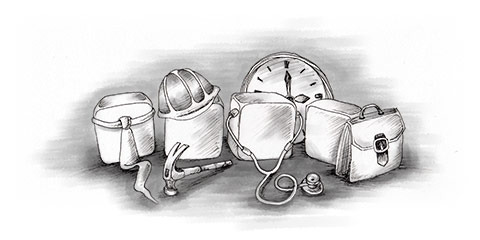Old-age pensions for all citizens over 65 were introduced in 1947, a feat perennially linked to the name of the minister of Social Affairs, Willem Drees, a social democrat. It is paid from tax money: those currently working pay for those currently retired.
If a couple lives together, both receive fifty percent of the net minimum wage. An individual old age pensioner receives seventy percent. In 2009 this was slightly less than 1,000 Euros per month. A majority of the people who retire receive a pension in addition to the AOW. Some pension funds cover a branch of the economy, others are limited to the employees of one large firm.
Pensions are saved throughout a working career. Pension funds typically raise total retirement pay to seventy percent of the average wage earned over one’s working life. In 2008, the Dutch pension funds together held some 700 billion Euros. This immense amount of capital means that Dutch pensions are among the most solidly financed in the world. In 2006, the capital of fthe Dutch pension funds equaled some 140 percent of GDP, compared to ninety percent in the United Kingdom, twenty percent in Germany or ten percent in France.
From the 1990s onwards, pension funds tried to raise their income by investing more in stocks, which made them more vulnerable to market downturns. In the 2008/2009 credit crunch they lost considerable sums and many fell below the level to which their expected claims should be covered by their capital. About fifty percent of the money paid out as Dutch pensions are AOW payments, forty-five percent is paid out by pension funds. The remaining five percent are individual private investments. These have grown over the last decades, as many foresee that old age entitlements will dwindle.
Strong points of the Dutch pension system
A strong point of the current Dutch system is that it predicts pension levels. This frees the individual from worrying about his or her investments, but of course it only transfers this worry to the pension funds. The pension system is a prime target for welfare state reform. Raising the mandatory retirement age will make it easier to finance pensions, and at the same time increases the number of people working and thus paying taxes and social insurance premiums.
With that in mind, for the last ten years the government has struck down measures that promoted saving up money to finance early retirement. It now seems likely that in the near future the retirement age in the Netherlands will go up to 67. Another measure that has been debated over the past years is making the retired pay more taxes. However, most political parties are weary of proposing this, fearing that they may chase away the elderly, who are an increasing percentage of the electorate.
Article from "Discovering the Dutch". Click here to get a copy now.



